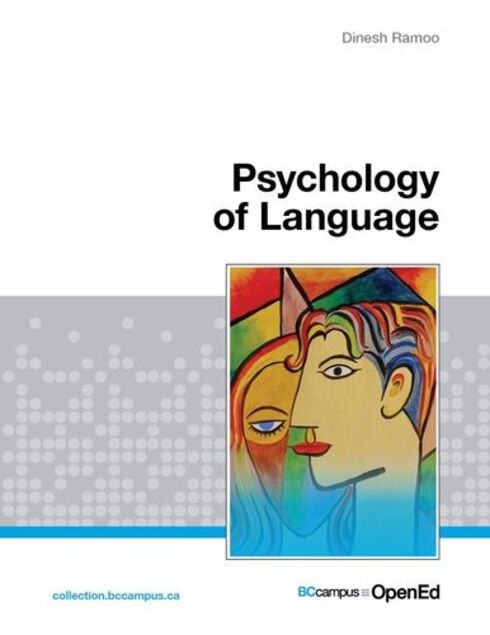
Psychology of Language
No ratings
Dinesh Ramoo, Thompson Rivers University
Marie Bartlett, Thompson Rivers University
Copyright Year: 2021
Last Update: 2024
Publisher: BCcampus
Language: English
Formats Available
Conditions of Use
![]() Attribution
Attribution
CC BY
Table of Contents
- Accessibility Statement
- For Students: How to Access and Use this Textbook
- About BCcampus Open Education
- Contributors
- Chapter 1: Speaking in Tongues
- Chapter 2: The Sounds of Language
- Chapter 3: The Parts of Speech
- Chapter 4: The Biological Basis of Language
- Chapter 5: Learning to Speak
- Chapter 6: Bilingualism
- Chapter 7: Visual Language
- Chapter 8: Reading
- Chapter 9: Speaking
- Glossary
- Versioning History
Ancillary Material
Submit ancillary resourceAbout the Book
About the Contributors
Author
Dinesh Ramoo is a lecturer at Thompson Rivers University in Kamloops, Canada. After receiving his PhD in Psychology from the University of Birmingham in 2014, he has worked in the United Kingdom, Sri Lanka, and Turkey before moving to Canada in 2019. He has also served as a consultant linguist for Google Inc. and Oxford University Press. His research interests include word-form encoding in English as well as Indian languages such as Hindi and Tamil. He employs experimental data from neurological patients with acquired language disorders as well as computational models to study language production.
Editor
Marie Bartlett is an Instructional Designer at Thompson Rivers University—Open Learning. Marie is dedicated to creating educational experiences that inspire and engage learners. She looks for opportunities to highlight active learning and creativity in her course design, and uses innovative pedagogical approaches to best utilize online environments for learning and teaching.
